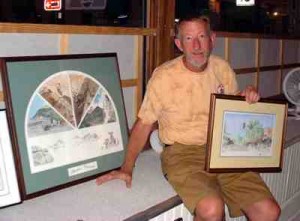Brief by Allen Best
Natural Disaster – October 2005 – Colorado Central Magazine
In our April edition, we looked at the possibility for earthquakes in Central Colorado — and concluded that it’s probably more prudent to worry about wildfires, flash floods, avalanches, blizzards and bears. Despite all its mountains and faults, Colorado is a fairly stable place — in a geological sense anyway.
Even so, Vincent Matthews is concerned. He’s the head of the Colorado Geological Survey. After running a Federal Emergency Management computer simulation of a magnitude-6 earthquake in Denver, he saw about $10 billion in damage, 50 to 130 fatalities, and at least half of the metro hospitals too damaged to handle the injured.
At 6.0 on the Richter scale, that fake quake was plausible — since 1880, Colorado’s bigger tremors have run from 5.0 to 6.5. Matthews says the federal government’s earthquake hazard map, drawn by the U.S. Geological Survey, probably underestimate the state’s earthquake risk.
The mapmakers rely on studies of known faults, and those faults haven’t received much study in Colorado because the state has been so seismically quiet. Thus, Matthews says, no one has done much research here.
On the other hand, University of Colorado geologist Anne Sheehan, who studies the state’s quiet seismic structures, says the federal maps probably overestimates the risk of quakes.
The biggest earthquake in Colorado history was magnitude 6.6 in 1882, and its epicenter was in the foothills west of Fort Collins. Hereabouts, they’ve been much smaller. On March 16, 1985, a quake, magnitude 3.3 and centered northeast of Salida, was felt in Salida and Nathrop. On September 3, 1986, a quake, magnitude 3.5, was centered northwest of Crested Butte and felt in Gunnison.

